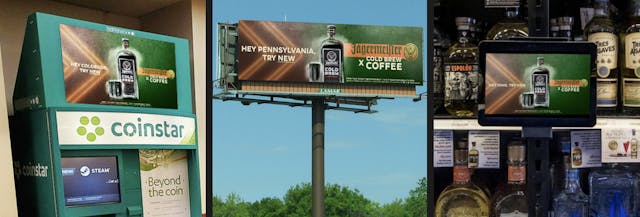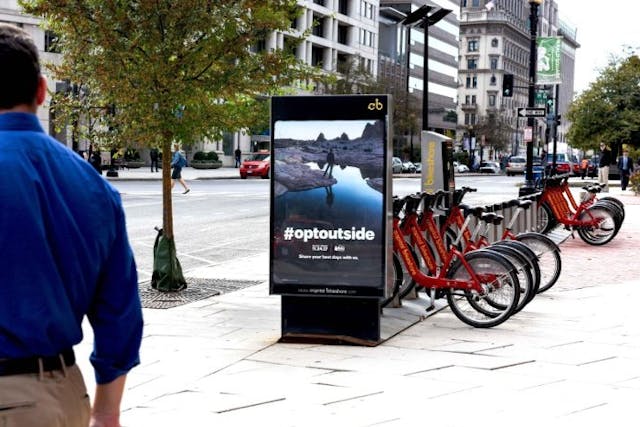Data and DOOH: How audience data is transforming out-of-home advertising
DOOH advertising success lies in knowing your audience, says Marissa Bernstein (VP of marketing, Vistar Media). Here she looks at how behavior, household, and first-party data enable targeted, privacy-compliant campaigns, driving both engagement and action.

“When you know your audience, your audience knows.”
This well-known saying remains one of the truest statements in the marketing world, yet it remains one of the toughest concepts to put into action.
All great advertising campaigns begin by profoundly understanding the wants, needs and desires of a specific group of people (i.e. the target audience).
Building creative that aligns with the interests, preferences and experiences of the target audience enables advertisers to launch campaigns that better capture consumer attention and drive relevance and engagement. Additionally, understanding the behaviors of a target audience allows marketers to strategically reach viewers with their brand messages at key touch points during their buying journey.
Historically, out-of-home (OOH) advertising has stood alone as a relatively analog channel presenting marketers with a unique challenge in building interconnected and data-driven campaigns. Thankfully, the world of OOH advertising has undergone a remarkable transformation in recent years, propelled by digitization, programmatic technology and the ability to incorporate data-driven audience targeting into campaigns.
In this article, we’ll explore how savvy marketers can integrate audience data into their digital out-of-home (DOOH) campaigns to reach their target audience with impactful messages at critical points throughout their day.
Types of audience data in DOOH
Behavioral patterns
As psychologist G. Stanley Hall put it: “Humans are creatures of habit.” They tend to follow relatively predictable patterns in their daily lives, from where they work, to where they go for fun, exercise or a night out.
Advertisement
Through the use of anonymized passive location data, marketers can tap into these behavioral patterns to gain a deep understanding of how consumers move throughout the day. Using this intel, advertisers can create audiences based on the places different groups of consumers visit and activate tailored DOOH ads based on where those audiences are most likely to be at any given time.

Looking to drive foot traffic to their stores, footwear brand Timberland leveraged anonymized location data to create and target a custom “outdoor lifestyler” audience for a DOOH campaign. This audience consisted of consumers who frequented outdoor recreation areas, trendy restaurants and similar retailers in major cities. Timberland programmatically activated DOOH media based on where these consumers were most likely to be throughout the day.

And it paid off. The campaign drove a 2.8x lift in store visits against the control group during the flight of the campaign.
Household data
Looking at purchase data provides brands with valuable information about a household's demographics, socio-economic characteristics and what products they are likely to buy in the future. Using this data, marketers can build audiences based on households that have purchased a particular type of product in the past and activate DOOH screens based on the locations those buyers tend to frequent.
To create positive disruption in the marketplace with a unique product, legendary spirit brand Jägermeister launched a highly-targeted DOOH campaign to drive awareness and purchase intent for its new cold brew coffee product. Using IRI data, Jägermeister built an audience of “adult spirits and coffee purchasers” to target consumers who had previously purchased these and therefore would most likely be interested in Jägermeister’s new product. The brand then used this audience to strategically activate screens in convenience stores, gas stations, liquor stores and grocery stores to reach spirit and coffee buyers on their path to purchase and at their point of purchase.

Jägermeister saw tremendous success with this tactic, ultimately garnering a 73% increase in awareness, a 66% lift in product consideration and purchase intent and a 14% lift in purchase intent.
First-party (customer) data
As brands look to drive more value from consumers and maximize their return on marketing investment, first-party (or customer) data is an invaluable asset. Consumers that have previously purchased from a brand are, on average, 67% more likely to do so again. And what better way to maximize the effectiveness of a campaign than by reaching consumers who have already demonstrated purchasing affinity?
Advertisement
Whether encouraging renewals, promoting new product launches or looking to boost upgrades, first-party data combined with DOOH advertising gives marketers a powerful way to engage in-market shoppers, when and where it matters most.
When looking to grow awareness of its #OptOutside campaign among current customers, outdoor brand REI leveraged its anonymized first-party data to activate cross-screen mobile and DOOH media — reaching loyal REI customers at places they were most likely to be throughout the day. The campaign was a smashing success, resulting in a 14% lift in awareness and a whopping 3.6x lift in store visits.

But what about consumer privacy?
All of these audience targeting strategies may sound great on the surface. Still, at the same time, it would be hard to talk about the targeting capabilities of DOOH without also mentioning consumer privacy in the same breath.
In the digital advertising world, brands use cookies to target individual consumers as they move throughout the internet — metaphorically “following” them around and serving them ads throughout their browsing experience. However, an ever-growing number of companies, government agencies and consumers themselves are fighting back against these tactics by disabling cookies, passing new consumer data privacy laws and adopting ad blocking technologies.
Suggested newsletters for you
However, because DOOH is a one-to-many medium, it is fundamentally built to be seen by groups of people at a time — making it an inherently privacy-compliant channel. On a more technical level, DOOH does not use cookies, or any other form of personally identifiable information in its audience targeting. Instead, DOOH relies on anonymized location data and trusted data providers to build and target audiences. This makes DOOH an even more enticing channel as the world shifts away from online consumer tracking.
Using DOOH to hit the target (audience)
Any great ad campaign starts and ends with the audience, and DOOH is no exception.
By building DOOH audiences based on purchase history, shopping habits and demographic traits, advertisers can more effectively target their desired consumers in the physical world with high-impact messages that are more likely to resonate.
Furthermore, understanding the specific behavioral patterns of these audiences allows advertisers to activate DOOH screens at the right times and places to reach their desired audiences at multiple touch points as they move throughout their day.
Once marketers start fully tapping into the goldmine of audience data, they will be empowered to build smarter, more effective DOOH campaigns that reach target consumers with high-impact messages that are most likely to resonate and drive them to action.
Content by The Drum Network member:

Vistar Media
Vistar Media is the home of out-of-home – providing brands, marketers and media owners with the world’s first truly intelligent platform for buying and selling...
Find out more
